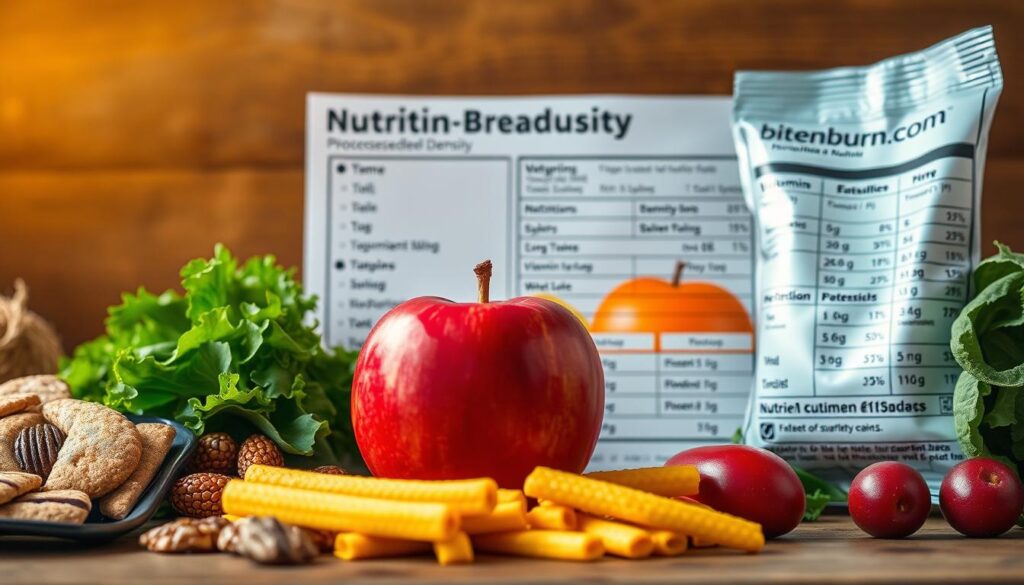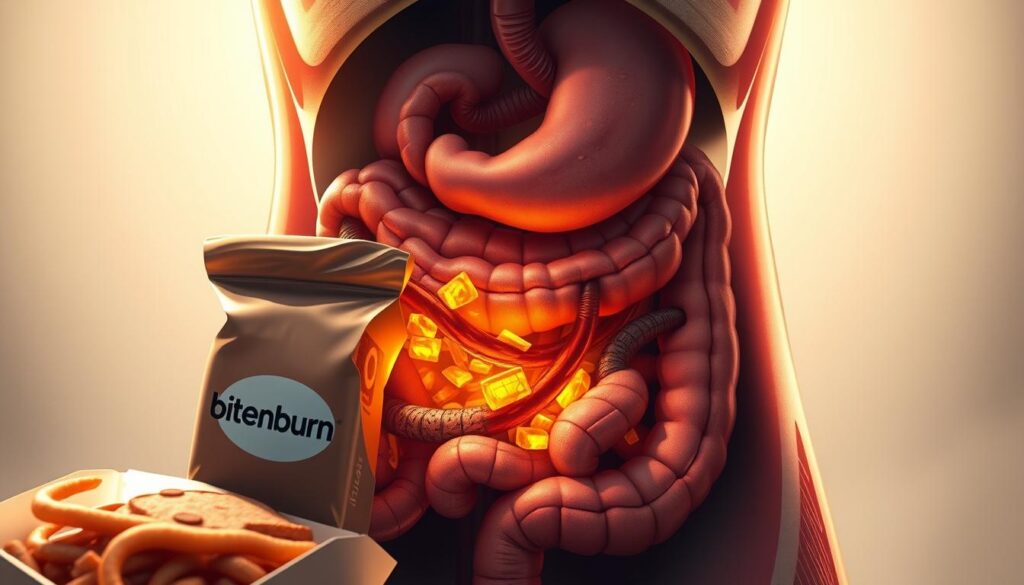Modern grocery aisles hide a startling truth: food-related health risks now rival cigarette mortality rates. Recent data shows that 71% of U.S. adults carry excess weight, with obesity rates climbing 5% in just five years. This isn’t about willpower – it’s about a system flooded with engineered products designed to hijack natural cravings.
Blue Zone populations, where people routinely live past 100, maintain BMIs below 23 through whole-food diets. Meanwhile, 88% of Americans exceed this benchmark. The average diet here contains over 55% ultra-modified items – substances that bear little resemblance to nutrition found in nature.
What makes this crisis particularly insidious? Damage accumulates silently. Like rust on a car frame, these products degrade cellular functions year after year. Cognitive decline, metabolic chaos, and accelerated aging often manifest decades after daily consumption begins.
The food industry spends billions marketing quick meals as harmless conveniences. Yet research reveals their creations alter gut bacteria, spike inflammation, and even reshape neural pathways. Every snack or microwave dinner chips away at your biological defenses.
Key Takeaways
- 71% of U.S. adults face weight-related health issues, up 5% since 2018
- Diet-driven diseases now surpass smoking as a leading mortality factor
- Only 12% of Americans meet Blue Zone longevity nutrition standards
- Metabolic damage from modified ingredients compounds annually
- Immediate dietary changes prevent cumulative organ system breakdown
Overview of Processed Foods and Their Health Impact
Supermarket shelves overflow with brightly packaged products that mask a growing crisis. Nearly 60% of calories consumed daily come from modified items packed with additives and stripped of nutrients. This shift in dietary patterns correlates directly with rising hospitalizations for preventable conditions.
Key Statistics and Health Trends
Startling data reveals:
- 97% of Americans fail to meet basic nutritional guidelines (CDC data)
- Early-onset strokes increased 45% since 2000 among adults under 45
- Renal failure rates quadrupled in regions with limited fresh food access
Mental wellness suffers equally. Research from JAMA Psychiatry shows modified diets disrupt neurotransmitter production, explaining why 20% of adults now battle anxiety or depression linked to poor intake choices.
Lifestyle Factors and Processed Food Consumption
Urbanization and work demands create reliance on quick meals. The average commute time leaves 33 minutes for meal preparation – pushing people toward pre-packaged options. Combined with sedentary jobs, this creates metabolic chaos.
“Food environments dictate health outcomes more than individual willpower,” states Dr. Elena Martinez from the National Public Health Institute.
Current weight standards mislead many. With 88% exceeding healthy BMI ranges, society now views obesity as normal. True wellness requires rejecting this distorted baseline through conscious dietary shifts.
Nutritional Breakdown of Processed vs. Whole Foods

Modern eating patterns reveal a nutritional paradox: calorie-rich meals increasingly leave cells starved for essential compounds. While modified items supply energy, they fail to deliver the 12,000+ phytonutrients found in nature’s bounty. This imbalance fuels cellular breakdown while expanding waistlines.
Caloric Density and Nutrient Deficiency
Every bite of refined grains or sugary snacks delivers 4x the calories of whole food equivalents, yet only 10% of their vitamins. Your body responds by demanding more fuel, trapped in a cycle of hunger and surplus energy storage. Researchers call this “cellular malnutrition” – a primary driver of modern metabolic disorders.
Consider this equation from nutritional science: H = N/C. Your long-term health (H) depends on maximizing nutrients (N) per calorie (C). A handful of nuts provides magnesium and antioxidants with controlled energy, while a bag of chips offers empty starch and oxidized fats.
Whole food choices like berries, leafy greens, and ancient grains contain protective compounds absent in factory-made items. These elements repair DNA, regulate inflammation, and shield neural networks. Your afternoon apple delivers more bioactive nutrition than a “fortified” protein bar.
“The average American meal contains 600% more calories than needed to meet micronutrient requirements,” states a 2023 Journal of Nutritional Biochemistry analysis.
Swapping processed items for seeds, fruits, and legumes recalibrates this imbalance. Your cells stop screaming for missing elements, reducing cravings and stabilizing energy. This shift forms the foundation of lasting wellness – one plate at a time.
how processed foods harm your body & brain over time hidden dangerous must know
Consuming modified meals triggers biological warfare within your systems. A 2023 Harvard study revealed that daily intake of ultra-refined items increases dementia likelihood by 25% through neural inflammation pathways. This damage occurs gradually, often escaping detection until significant impairment develops.
Cardiovascular Compromise
Industrial food additives destabilize blood vessel function. Refined carbohydrates spike insulin levels, creating arterial plaque deposits 3x faster than natural aging. Your heart muscle works harder while receiving fewer nutrients.
| Whole Food Benefits | Processed Food Risks | Biological Impact |
|---|---|---|
| Omega-3 fatty acids | Trans fats | 34% higher stroke risk |
| Dietary fiber | Modified starches | Compromised gut barrier |
| Antioxidants | Advanced glycation end-products | Accelerated cellular aging |
Neurological Erosion
Factory-made snacks disrupt dopamine regulation, creating dependency cycles while starving neural networks. Journal of Neuroscience research shows these dietary patterns reduce hippocampus volume by 11% per decade – directly impacting memory formation.
“Every meal choice either builds cognitive reserves or depletes them,” notes Dr. Rachel Kim, lead author of the Framingham Nutrition Study.
Chronic inflammation from modified oils and sugars damages the blood-brain barrier. This allows toxins to infiltrate neural tissue, increasing depression rates and impairing decision-making capacities. Protective nutrients like flavonoids remain absent in most packaged items.
Understanding Caloric Overload and Metabolic Effects

What appears as a harmless snack might secretly wage war on your metabolism. Consuming just 50 extra calories daily – equivalent to four potato chips – can lead to 50 pounds of weight gain over a decade. This stealthy accumulation raises diabetes risk by 33% and accelerates cellular aging through chronic inflammation.
Insulin Response and Blood Sugar Spikes
Refined carbohydrates act like metabolic grenades. A 2024 Cell Metabolism study showed white bread triggers insulin surges 8x faster than whole grains. Your pancreas works overtime, pumping out hormones to manage glucose floods that damage arterial walls.
| Whole Food Energy | Processed Item Impact | Health Outcome |
|---|---|---|
| Gradual glucose release | Instant sugar spikes | Stable energy levels |
| Natural satiety signals | Overconsumption trap | Weight management |
| Nutrient co-factors | Empty calories | Reduced diabetes risk |
Blood sugar rollercoasters from modified foods create relentless hunger cycles. Research reveals these swings alter leptin signaling, making your brain ignore fullness cues. Each energy crash drives further consumption, locking you in a self-perpetuating metabolic trap.
“The difference between whole and processed carbohydrates isn’t just nutritional – it’s fundamentally hormonal,” explains endocrinologist Dr. Mark Hyman.
Choosing fiber-rich options like lentils or quinoa stabilizes energy delivery. Your cells receive steady fuel without overwhelming insulin systems. This simple swap protects pancreatic function while maintaining healthy body composition.
The Role of Additives, Preservatives, and Chemicals
The convenience of grab-and-go meals comes at a hidden biological cost. Common foods contain synthetic ingredients that disrupt essential bodily functions. A single fast-food burger delivers 27 chemical additives – substances never found in ancestral diets.
Research from the World Health Organization shows fried items contain carcinogens exceeding safety thresholds by 100-fold. These compounds accumulate silently, overwhelming natural detox pathways.
Artificial Sweeteners, Trans Fats, and Emulsifiers
Common additives create cascading health effects. Sugar substitutes alter gut bacteria within 48 hours, while emulsifiers weaken intestinal barriers. Trans fats in baked goods increase disease risk by triggering systemic inflammation.
Consider these impacts:
- Cola drinks with high-fructose corn syrup spike blood sugar levels faster than table sugars
- Processed meats contain sodium nitrites linked to cellular damage
- Microwave meals lack protective nutrients found in fresh produce
Your body struggles to process these factory-made ingredients. Choosing whole foods reduces toxic burdens while supplying missing nutrients. Small dietary shifts significantly lower chronic disease susceptibility over time.

